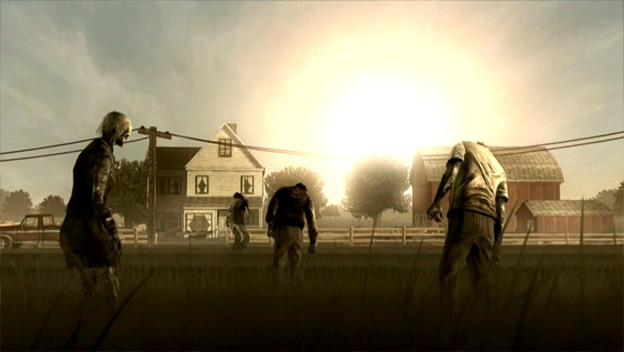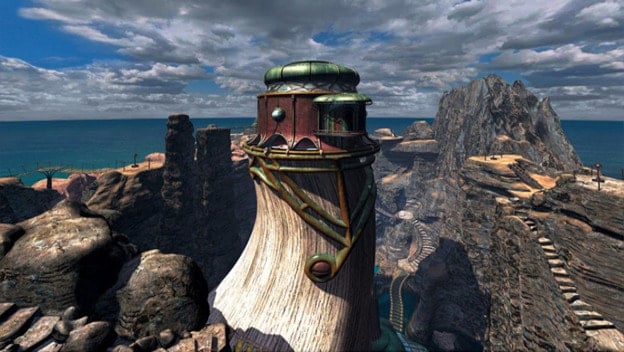In gaming, it’s surmounting obstacles that we so often find rewarding. While some games today are more about the experience than the challenge, most are structured around either competition with other players or the completion of prescribed challenges. Nowhere is this more evident, and structured, than in the traditional adventure game.
While a room of enemies takes fast reflexes and tactical skill to clear, an adventure game’s puzzle is generally a more cerebral endeavor. The Layton games come to mind, with their constant, discrete puzzles often a showcase of logical thought or lateral thinking. They’re not perfect, though, and many of the puzzles rely on a degree of presumption or outside knowledge that doesn’t come naturally; Miracle Mask has a Ferris wheel-focused puzzle in which one must make at least two logical leaps of faith to arrive at the game’s expected conclusion.
It reminds me of earlier point-and-click adventure titles, and even the recent resurgence of the genre. Unlike Layton and The Walking Dead, the adventure game tradition trends toward inventory-based puzzle solving. As you explore environments, you gather items from your surroundings and, when encumbered by roadblocks to your progress, invoke the properties of these inventory items to circumvent the obstacle and resolve the situation.
The solutions often make sense. Early in Full Throttle, you need gasoline for your bike. Siphoning it from a police aircraft involves using a hose on the gas tank, then using your protagonist’s mouth on the hose. It took me a bit to figure that last element out, because I was a child unfamiliar with the process of siphoning, but when I saw my dad start siphoning a fish tank with the same method, it immediately clicked.
This is a good puzzle because its solution is fairly simple and makes sense, but isn’t especially obvious. It provides the player with a pat on the back, rather than a patronizing one on the head. The more complicated the solution, though, the more rewarding the eventual realization is, that grand “eureka!” moment at the end that makes the entire struggle worthwhile.
In the Curse of Monkey Island, there’s a section in which Guybrush Threepwood must heat a cauldron situated above what was once a flowing river of lava. To accomplish this, he must infiltrate the food-based-mask-wearing cult of a lactose-intolerant volcano god, which entails carving a mask out of a large block of tofu. He then drops nacho cheese into the active volcano, causing a minor eruption that restores the flow of lava down the mountain.
It’s a problem, though, if this is taken too far. All too often, even the best adventure games feature a puzzle that simply defies all logic, involves an overly obtuse solution, requires far too many steps in too specific an order, or has no apparent corresponding inventory item to be used in its completion. It’s moments like these that spawned the adage “rub your inventory against it until something happens.” So first you’ll work your way through your inventory items, one by one, using them on anything that seems even tangentially related to the problem.
When this doesn’t work, you’ll try combining the items with one another, hoping to create a new one that will resolve your dilemma. If that also fails, then comes the pixel hunting and backtracking, looking for objects you’ve missed or points of interaction you hadn’t considered. Occasionally, the issue is that the game just demands a wealth of trial and error. This can be outright frustrating in adventure games that actually feature death or other permanent means of failure as a consequence to one’s actions, such as the King’s Quest series or Phantasmagoria—or, really, anything from Sierra.
These puzzles aren’t always hopelessly abstract, either—most games aren’t Myst, or anything like it—but they lack enough context to help the player get the ball rolling on a solution. Often, these titles provide hints to the player when they observe or interact with the object of their frustration, but few seem to take it a step further and provide an actual purpose for examining the items in one’s inventory. I don’t mean like King’s Quest VII, where it was necessary to actually examine and then interact with a few inventory items to solve certain puzzles, but even just a description of each item that involves a hint, perhaps by use of a keyword, as to what they’ll be used for would be a godsend.

Because, while the ideal is to stick firmly within the realm of logic, many games are set in fantastical realms with their own realities. The trick is to abide by the rules of the setting, and to articulate those rules to the player so that they can learn to take advantage of them. The Gabriel Knight series was fairly serious, built on a thriller framework, but having a puzzle in which one must obtain cat hair for a fake mustache to impersonate a person who doesn’t even have a mustache? Cruel, and oddly out of tune with the rest of the series.
Along those lines, don’t over-complicate the basics. If we need to get our character’s wallet out from under the couch, let us move the couch, or grab a broom. Don’t have us send our pet rat under there to retrieve it for us. That’s just absurd. Yes, there’s a certain love for introducing complications to fairly standard tasks, but it’s one thing to have a clerk who will provide you with random, pirate-themed prosthetics based on a choose-your-own-adventure story and another to ask players to interpret sequences of monkey grunts for a rock, paper, scissors minigame that proves repetitive instead of engaging.
Which is the final point: Potential tedium can be smartly averted by playing to the strengths of your game. Insult sword-fighting in the Monkey Island games is, in concept, fairly dull. You have to collect insults by losing sword fights, then collect the responses to those by losing yet more. Eventually, you have enough to beat your final foe and move on with the game. It’s engaging, though, because the insults are so damn funny, and you have to wonder just how one does respond to an insult such as, “You fight like a dairy farmer!” In contrast, while the fourth game’s Monkey Kombat follows the same framework, it is composed of abstract monkey grunts instead of witty repartee. This makes it dry, boring, and ultimately anti-climactic.
It’s great that adventure games are seeing a resurgence. They provide the framework for some of the best stories in video games, bar none. But with their return, it’s important that the developers behind them be careful to learn from the mistakes that undid the genre in the first place.
 | By Shelby Reiches Lead Contributor Date: February 22, 2013 |
